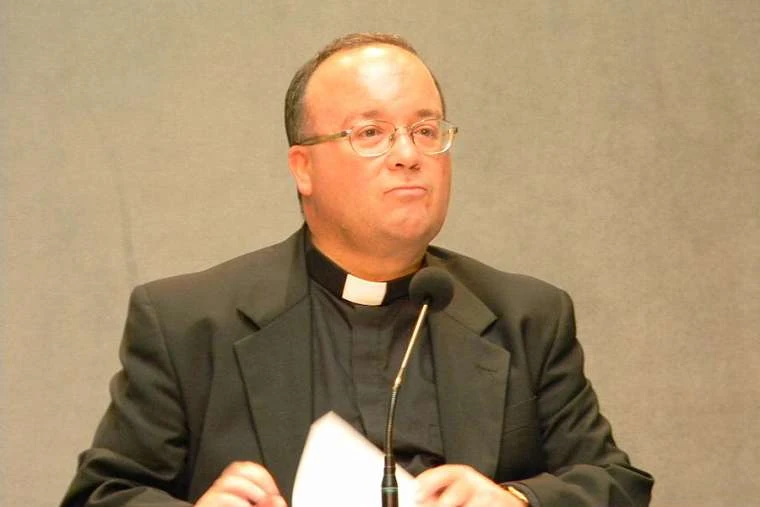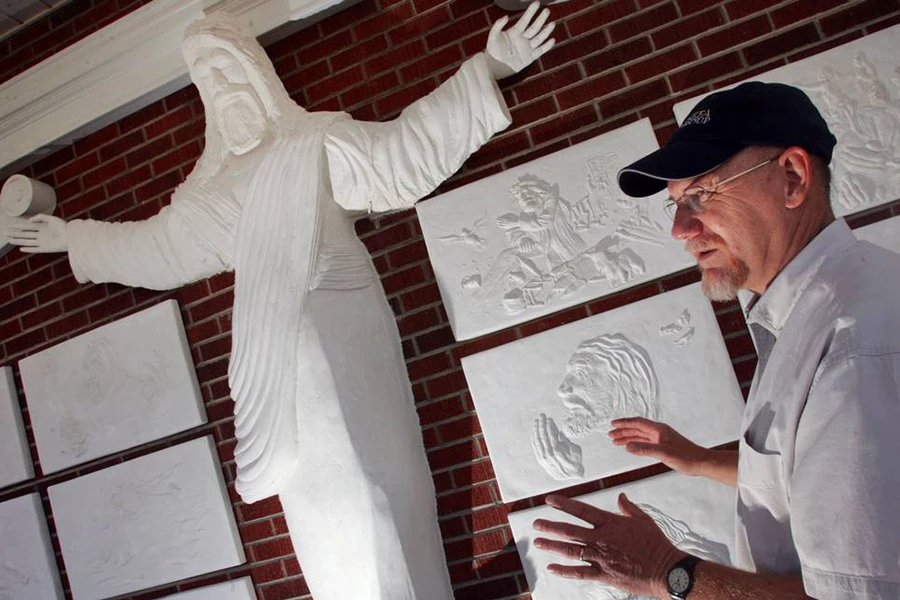
Denver, Colo., May 31, 2018 / 03:09 am (CNA).- Earlier this year, a 25-year-old man smashed his rental van into innocent pedestrians in downtown Toronto on a Tuesday, killing 10 and injuring more than a dozen.
The driver was not part of the usually-suspected terrorist networks. Instead, he was found to be part of the “incels” – short for involuntary celibates – an obscure online community of mostly men who blame women and society for their lack of a sex life. They believe the distribution of sex in the world to be unfair – particularly to them.
Their once dark and largely-unknown corner of the internet has since garnered some attention following the attack, prompting New York Times columnist Ross Douthat to posit that sex robots will be society’s answer to the incels – the logical way to pacify their lust before they turn more vans on innocent civilians.
“Whether sex workers and sex robots can actually deliver real fulfillment is another matter,” Douthat wrote. “But that they will eventually be asked to do it, in service to a redistributive goal that for now still seems creepy or misogynist or radical, feels pretty much inevitable.”
A subsequent cover story on sex robots featured in New York Magazine noted that some research has predicted that by 2050, sex robots will not just be for the angry incels, but for society at large. People will have – and possibly prefer – intimate relationships to sex robots than to people, the story predicted.
Are we more than an orgasm?
Sr. Mary Patrice Ahearn is a psychologist and a religious sister with the Religious Sisters of Mercy in Alma, Michigan.
Ahearn said that the rise in communities like incels and the prospect of relationships with sex robots points to the fact that society has forgotten God, or the transcendental aspect of the human experience.
“I think what they’re both pointing to, which nobody talks about, is the transcendental desire or part of each of us,” she said. “(W)hen we take out this transcendental part, or dare I say faith or God, you have to fill that void with something.”
People need to seriously grapple with the transcendental ache and longing that they feel in their lives, and come to terms with what that might mean, rather than looking to fill the void with sex robots or other technology, she said.
“So I would ask the question: Is the deepest desire in your heart to be sexually satisfied, to have an orgasm? Is that the deepest desire of my heart? And people have to seriously ask those questions,” she said.
“Everyone has this desire for sex,” Ahearn said, “but so do the cows we drive by on the road, we all have that.”
Not only is society increasingly irreligious and unwilling to acknowledge the transcendental, but humanity is also losing some of the basic bonds of family and friendship to technology, bonds which used to allow people to experience intimacy outside of sexual relationships, she added.
“We’re more connected than ever if you think of technology and all the ways that we can communicate,” she said. But it doesn’t always lead to deeper human relationships because it’s “this constant checking with their devices, just constant restlessness with it.”
The rise of the incels and the sex robot seem to be indications (albeit extreme ones) of another societal problem – we’re really, deeply lonely.
The loneliness problem
Recent research has shown that Americans are lonelier than ever, and technology may be the biggest culprit. A 2016 study found a strong correlation between amounts of time spent on social media and depression in young adults – the longer one lingered on sites like Facebook and Instagram, the more depressed they were.
Last year, former U.S. Surgeon General Dr. Vivek H. Murthy began warning of a loneliness epidemic, a public health crisis he says has gone largely ignored but that nonetheless has detrimental impacts on people’s physical and emotional well-being.
Just last month, a survey of Americans conducted by Cigna insurance company also found that people are lonelier than ever – especially the young. At least half of the survey respondents identified themselves as lonely, and the average American scored a 44 on the UCLA-created “loneliness” scale, qualifying them as, well, lonely. The Cigna survey also found that how people used social media mattered – those who used it to reach out and make real connections were less lonely than those who just passively scrolled through feeds.
Cristina Barba is the founder and executive director of The Culture Project, an organization which sends teams of young people to high schools and youth groups to “proclaim the dignity of the human person and the richness of living sexual integrity, inviting our culture to become fully alive.”
In their work with young people, Barba said they have found that technology is exacerbating the already-emerging problems of social isolation in American culture to the extreme. Not only are young people more lonely, she said, they often do not know how to make authentic, real-world connections.
“It’s a combination of a lot of things,” Barba told CNA. “The breakdown of family and marriage, families move far apart from each other, people not even having their parish worship communities like they used to…those are all broader societal issues.” “But I think what is most pervasive and most recent is technology,” she added. “Technology has just taken this to the next level, much more quickly.”
Barba’s findings match up with what researcher and psychologist Jean Twenge found among what she calls iGen, the generation after Millennials that grew up never knowing a world without the internet and smartphones.
“Social-networking sites like Facebook promise to connect us to friends. But the portrait of iGen teens emerging from the data is one of a lonely, dislocated generation,” Twenge said in a September 2017 article for The Atlantic. “Teens who visit social-networking sites every day but see their friends in person less frequently are the most likely to agree with the statements ‘A lot of times I feel lonely,’ ‘I often feel left out of things,’ and ‘I often wish I had more good friends.’ Teens’ feelings of loneliness spiked in 2013 and have remained high since,” Twenge said.
The Culture Project itself started out as a community of friends that came together, bonding over the fact that they had tried the culture’s path to happiness in various ways and had found it wanting, Barba noted.
Instead of “sitting around and moaning” about it, Barba said that group of friends decided to do something to make a difference. They started living in community, and forming the mission of The Culture Project, which gives talks to teens throughout the country about chastity and living lives of sexual integrity.
But while community has been a “key pillar” for The Culture Project, they’ve found that technology has made it so that teens today do not know how to form community or even friendships among themselves, let alone romantic relationships.
“We’ve had parents coming to us and say, ok it’s great that you’re talking about virtue and dating, but my kids don’t even know what it means to have a friend. Can you talk about friendship?”
Today’s teens are a generation that has been raised on the internet and social media, Barba said, which means that their idea of friendship equates to that of a follower.
“It’s like a show that you’re putting on,” she said, “it’s people that follow you and people that you follow. It’s not an interaction, the only interaction is to make others jealous, or to be cooler than or to prove yourself. There isn’t actually a meeting of common interests, or someone you do stuff together with, someone you care about. All of those things are lost through social media at a young age.”
‘Encounter’ as a solution
Culture Project missionaries address the friendship crisis in multiple ways throughout their encounters with teens, Barba said. One of the most effective ways to address this crisis has been simply modeling authentic, healthy friendships among the Culture Project teams.
“It’s actually them seeing the interactions of our missionaries – a couple guys who are normal, fun, attractive young men and women who are a little bit older than them…and they see these people interacting and it’s a beautiful, healthy, normal dynamic of friendship,” she said. “What we model in our interactions is what is profound and shocking to them.”
They also take the time to address social media, and bring to their students’ attention how much time they are probably spending on social media, and how it could be impacting their relationships.
Pornography and sexting – major pitfalls for young adults in a technology driven world – are also important to address.
The idea is not to bash technology, which is a neutral tool, Barba said, but to raise awareness of how addicted they have likely become to their devices, and to offer practical tips to counter that with more human interaction in their lives.
“We just bring to their attention – what are the ways that we use this? And wow, how many hours a day am I really on that?”
The challenge students to do media fasts – whether that’s an hour a day, or even a week, that they don’t use social media, and see how they feel during that time.
They also challenge them to fill that time with real human interaction – and they’ve had to come up with basic friendship guidelines to teach students how to do this.
“We’re literally making suggestions – and I just have to laugh – it’s the way people need dating guides right now, but it’s like friendship guides,” Barba said. “Like what do friends do? You could meet and go to the mall. You could meet and go to the movies. You could meet and go for a walk. I’m not even kidding.”
While the problem is not one that is easily fixed, Barba said she and her missionaries have found that little efforts can make a big difference.
“I think even just providing a space for young people, whether its a physical space or an event, but providing activities they can do together,” she said.
“It’s so basic, just basic human things, like families and parents spending time together. Or basic community, what parish life used to be or should be – people living near each other, that care about each other, that worship together, that have fun together, that have meals together, things like that,” she said.
 […]
[…]









